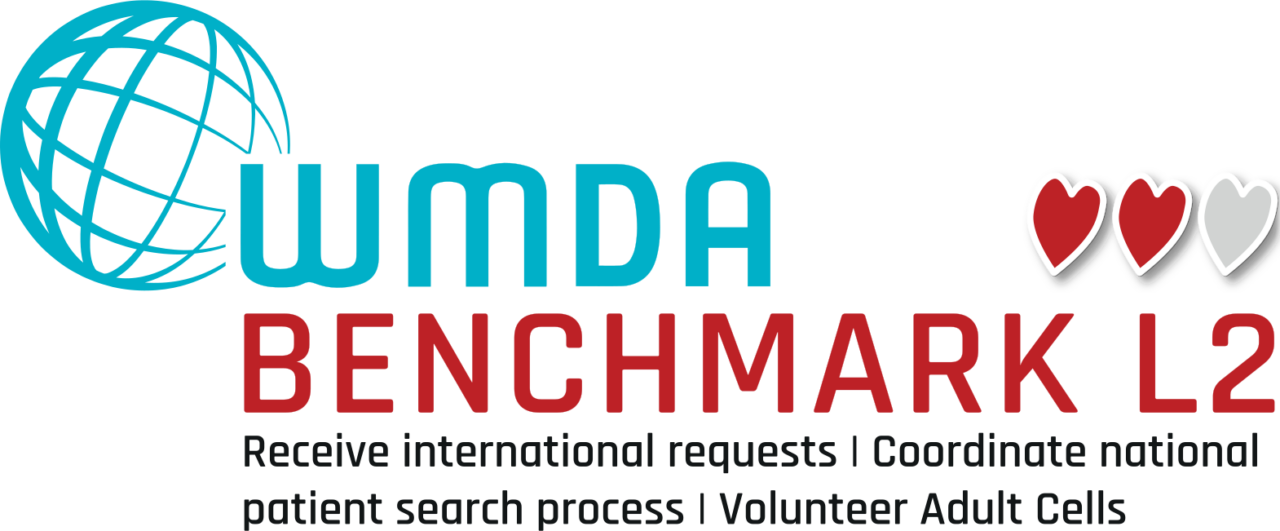World Blood Cancer Day 2023

Hematopoietic stem cell transplantation,
one of the most effective treatments for blood cancers
Every year, three out of 100,000 Romanians are diagnosed with a blood cancer, while in the world, every 35 seconds, a person learns that they suffer from such a disease. In recent years, treatment options have increased significantly, and one of the treatments that has proven to be the most effective is hematopoietic stem cell transplantation. The main advantage of hematopoietic stem cell transplantation is that it offers a chance for cure or long-term remission to patients suffering from blood cancers and who have an indication for this procedure.
World Blood Cancer Day is marked every year on May 28, with the aim of supporting people suffering from blood cancer and promoting the donation of hematopoietic stem cells, with the help of which transplantation is possible.
„By celebrating the day of the fight against blood cancers, we try to raise awareness about what blood cancer means, how we diagnose it, how we treat it and what chances of cure there are. Hematological cancers benefit from one of the most advanced areas of research, in recent years new personalized, targeted therapies have been discovered, which offer chances of cure even for cases refractory to standard treatment. All types of hematopoietic stem cell transplantation have become routine therapies in Romania and we hope that cell therapies, newly introduced in our country, will develop in the near future,” says Prof. Dr. Alina Tănase, president of the Romanian Society of Marrow Transplantation.
„”Patients suffering from blood cancer have more and more treatment options, which can be observed in the increasingly gratifying results of therapies and in the quality of life,” says Cezar Irimia, president of FABC.
One of the treatments that has proven to be the most effective so far for blood cancers is hematopoietic stem cell transplantation – a procedure used to replace diseased bone marrow with healthy one, which can produce normal blood cells. Transplantation is indicated as a treatment for several diseases, such as acute leukemia, multiple myeloma, but also severe aplastic anemia, sickle cell anemia, thalassemia major, immunodeficiency diseases, Fanconi anemia, hereditary metabolic disorders, etc.
Hematopoietic stem cell transplantation can be of two types: autotransplantation (transplantation of one’s own stem cells) and allotransplantation (transplantation from a donor). The stem cells are administered to the patient in the form of a transfusion, regardless of the method by which they were donated. In the case of both types of transplantation, the patient’s recovery can take months or years.
Autologous hematopoietic stem cell transplantation (or autologous transplantation) is a therapeutic procedure that involves harvesting hematopoietic stem cells from the patient, storing them under special conditions, and reinfusing them after high-dose chemotherapy or radiotherapy. The goal of autologous transplantation is to destroy residual tumor cells and restore bone marrow function, which is affected by aggressive treatments. Autologous transplantation is used in particular to treat hematological malignancies (multiple myeloma, malignant lymphomas, etc.), but not all patients are eligible for this procedure.
Allotransplantation of hematopoietic stem cells is a therapeutic procedure that involves harvesting hematopoietic stem cells from a compatible donor and transfusing them into a patient who needs to replace diseased or destroyed bone marrow. The goal of allotransplantation is to restore normal blood cell production and to induce a graft-versus-tumor effect, i.e. an immune reaction of the donor cells against the tumor cells. Allotransplantation is used mainly to treat hematological malignancies, but also to treat non-malignant diseases, such as severe aplastic anemia.
“A donor can be a family member or an unknown person, registered in a registry of voluntary donors. The conditions are to be a healthy person and to be between 18 and 60 years old. At this moment, in Romania there are almost 100,000 people registered in the registry and 45 people waiting for a compatible donor. Since the chances of being compatible increase the larger the neighborhood, I encourage Romanians to register in the Registry and become a chance at life for other people. Details on how you can become a stem cell donor are on the website www.registru–celule–stem.ro.” says Dr. Traian Laurian Arghişan, Interim General Director of the National Registry of Voluntary Hematopoietic Stem Cell Donors.
Stefania (31 years old) decided in July 2019 to have a series of routine tests before going to a music festival with a tent. The diagnosis: acute leukemia. “What did I feel when I received the diagnosis? It was a shock. Nothing can prepare you for such news.” Stefania underwent chemotherapy at Colțea Hospital, then was transferred to the Fundeni Institute, where she underwent a hematopoietic stem cell transplant from an unrelated donor. “I feel great and I have returned to normal life. I am so happy that a young man had the courage and generosity to donate stem cells, which for me meant healing. It saved my life!”
Adrian was 29 years old when he was diagnosed with acute lymphoblastic leukemia type B. “When I found out about the diagnosis, my first thought was death. What else could you think of?” His brother was tested for compatibility, but unfortunately the news was not good. After 7 months of hospitalization, Adrian received the news that a donor had been found for him in Germany, 90% compatible: a woman. “It’s like being born a second time. It helped me reconsider life, to look at every second differently. It awakened in me the desire for knowledge and to do good,” says Adrian, who is now 37 years old.














